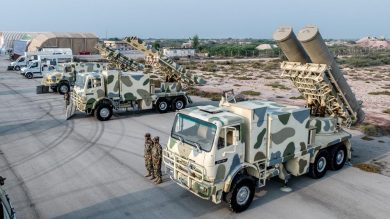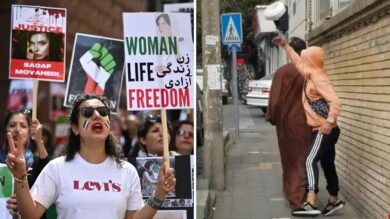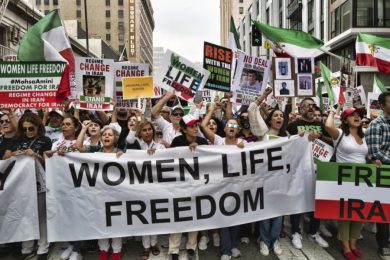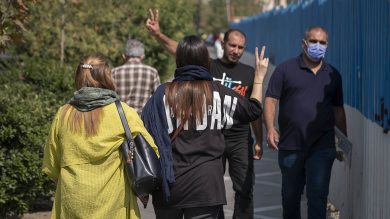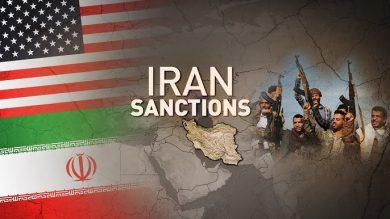In the Islamic Republic of Iran, education is not just about math, science, or language — it’s a battlefield for loyalty. From the classroom to the mosque, from televised cartoons to military camps, Iran’s youth are targeted by a powerful force: the Islamic Revolutionary Guard Corps (IRGC).
Tasked with defending the revolution, the IRGC doesn’t only use guns and missiles. It uses textbooks, uniforms, and prayers. Through a vast network of programs and institutions, it seeks to shape the beliefs, identities, and futures of millions of Iranian children — turning them into soldiers, informants, and ideologically loyal citizens.
This article investigates how the IRGC systematically indoctrinates Iranian youth, how it controls their education and socialization, and how this project of ideological engineering affects the country’s future — and violates their most basic rights.
1. The IRGC’s Vision: Loyalty Over Learning
Since the 1979 revolution, Iran’s clerical rulers have believed that the stability of their regime depends on controlling the minds of the next generation. The IRGC has played a central role in this project by embedding itself into the heart of youth education, religious training, and extracurricular life.
Core Objectives:
• Instill loyalty to the Supreme Leader and the regime
• Promote martyrdom and jihad as virtues
• Create a “revolutionary identity” rooted in Islamic militarism
• Discourage Western values and independent thinking
• Identify and suppress dissent at an early age
What results is not just an educational system — but an ideological pipeline, turning children into tools of state survival.
2. The Basij Student Network: Militarizing the Classroom
The IRGC’s most direct instrument for youth indoctrination is the Basij Resistance Force, a paramilitary network with branches in nearly every school and university in the country.
Basij Activities in Schools:
• “Ideological training” classes on religion and nationalism
• Morning chants of allegiance to the Supreme Leader
• Basij youth uniforms, flags, and public oaths
• Encouragement to report peers or teachers with “anti-revolutionary” views
• Visits to IRGC bases and war memorials
• Military drills and weapons training in some secondary schools
Participation is often presented as “voluntary” — but refusal can lead to disciplinary action, blocked academic paths, or social isolation.
3. Textbooks as Propaganda Tools
The IRGC and its allies have rewritten Iran’s school curriculum to reflect state ideology.
Examples from Current Textbooks:
• Glorification of martyrdom in Islamic and Persian literature
• History lessons framed around the “heroism” of the IRGC and Iran’s “resistance” to the West
• Science and technology books that minimize global contributions and elevate regime achievements
• Religious instruction that condemns secularism, feminism, and liberal values
Students are taught that dissent is treason, obedience is holy, and jihad is a form of love for God.
4. Cultural Centers and “Soft War” Training
Outside the classroom, children are further indoctrinated through IRGC-affiliated cultural institutions, known as “Markaz-e Farhangi” (Cultural Centers).
Activities Include:
• Religious theater productions glorifying martyrdom
• Quran competitions with anti-Western sermons
• Revolutionary songs and poetry readings
• Film screenings of war propaganda and “Western decadence”
• Roleplaying exercises simulating combat and “enemy infiltration”
These centers also push “soft war” education, which teaches youth how to identify and resist foreign media, music, fashion, and culture — painting all Western influence as existential threats.
5. The Sacred Defense Youth Camps
Every summer, thousands of children are sent to Rahian-e Noor or “Path of Light” camps — pilgrimages to former Iran-Iraq war battlefields, funded and operated by the IRGC.
At These Camps:
• Children wear military fatigues and recite revolutionary chants
• They are taken to mass graves and trenches, told stories of martyrdom
• Videos of “enemy crimes” are shown to stoke anti-American and anti-Israeli sentiment
• Basij instructors encourage participants to prepare for their own “martyrdom journey”
These camps aren’t about history. They’re about creating sacrificial youth ready to die for a regime they’re too young to question.
6. Digital Indoctrination: Social Media, Apps, and Games
The IRGC has invested in online tools and mobile apps aimed at radicalizing young minds.
Examples:
• Quran study apps with embedded anti-Western messaging
• IRGC-funded cartoon series depicting enemies as Zionists or foreign agents
• Video games like “Operation Jerusalem” where players kill Israeli soldiers
• Basij-controlled Telegram and Instagram channels sharing disinformation and state narratives
While the IRGC bans many international platforms, it floods approved networks with propaganda disguised as education.
7. Targeting Universities: Thought Police on Campus
Universities in Iran were once hubs of intellectual and political activism. Today, they are under IRGC surveillance.
Tactics:
• Basij student unions monitor and report professors and classmates
• Revolutionary Guards serve as faculty or deans
• Political science and humanities programs are censored or restructured
• Student protests are crushed, with leaders expelled or imprisoned
The IRGC’s goal is clear: prevent a new generation of thinkers who might imagine a post-theocratic Iran.
8. Repression of Youth Protesters
When students or teens push back — as they have during major uprisings in 2009, 2017, 2019, and 2022 — the IRGC responds with unflinching violence.
Recent Incidents:
• High school girls arrested for removing hijabs and chanting anti-regime slogans
• Schools raided, teachers arrested, and students disappeared
• Families threatened not to speak to the media
• Teenage prisoners subjected to torture, solitary confinement, and sexual abuse
Many young protesters are charged with vague national security offenses. Some face decades in prison or execution.
9. Poisonings and Psychological Warfare
In early 2023, Iran was rocked by a horrifying wave of chemical attacks on girls’ schools, affecting thousands of students in dozens of cities.
While the regime denied responsibility, many suspect IRGC-linked hardline groups were behind the attacks — aimed at punishing girls for protesting.
Effects:
• Hundreds hospitalized with breathing problems, nausea, and seizures
• Lasting trauma, school dropouts, and parental fear
• Continued impunity, despite public outrage
The message was unmistakable: resisting indoctrination could cost you your health—or your life.
10. International Law and Children’s Rights Violations
Iran is a signatory to the UN Convention on the Rights of the Child, which guarantees:
• Freedom of thought and conscience
• Protection from military recruitment under age 18
• Access to impartial education
• Protection from mental and physical abuse
The IRGC’s indoctrination and militarization of youth violates every one of these principles.
Yet, due to Iran’s political status and global inaction, no mechanisms currently hold the regime or IRGC accountable.
11. Resistance Inside the Classroom
Despite repression, Iranian youth — and many of their teachers — have fought back.
Acts of Resistance:
• Students defying Basij participation and refusing uniforms
• Girls removing hijabs during school assemblies
• Teachers’ unions protesting indoctrination and calling for curriculum reform
• Underground student publications exposing censorship and abuse
These brave acts often come at a cost: arrest, blacklisting, or exile. But they plant seeds for a new generation that won’t be controlled.
12. The Role of the Diaspora and International Community
Iranian diaspora communities, education experts, and child rights activists have a crucial role to play.
Recommendations:
• Amplify testimonies of student and teacher resistance
• Support underground education and digital tools for Iranian youth
• Push for sanctions on IRGC-affiliated education entities
• Pressure the UN and human rights organizations to investigate abuses
• Promote global campaigns on children’s rights and education in authoritarian regimes
The IRGC cannot indoctrinate in secret if the world is watching.
Conclusion: The Future They Fear
The IRGC spends billions to indoctrinate children because it knows the truth: young minds are powerful.
They fear a generation that thinks critically.
They fear a girl who removes her hijab and asks why.
They fear the child who questions martyrdom and chooses life.
Join Our Newsletter!
Stay informed with the latest updates, news, and ways to take action in the fight for justice and global security. Sign up now to get updates delivered straight to your inbox!

